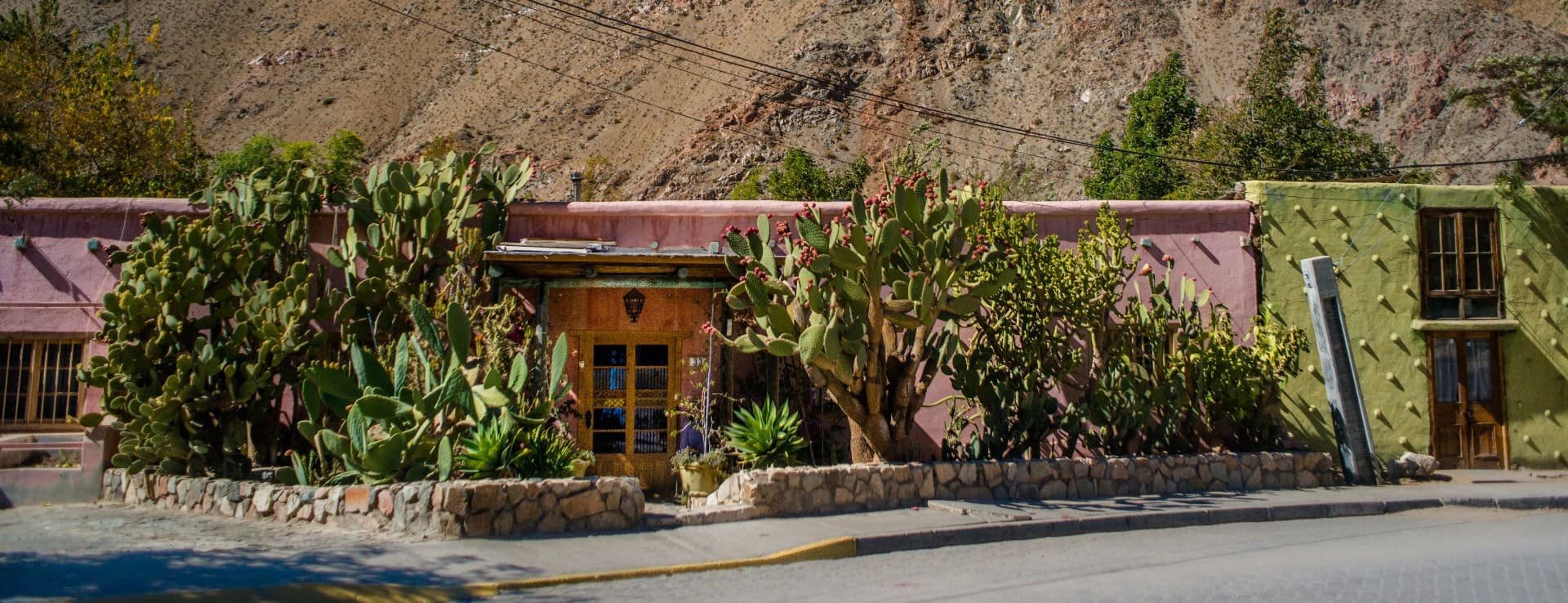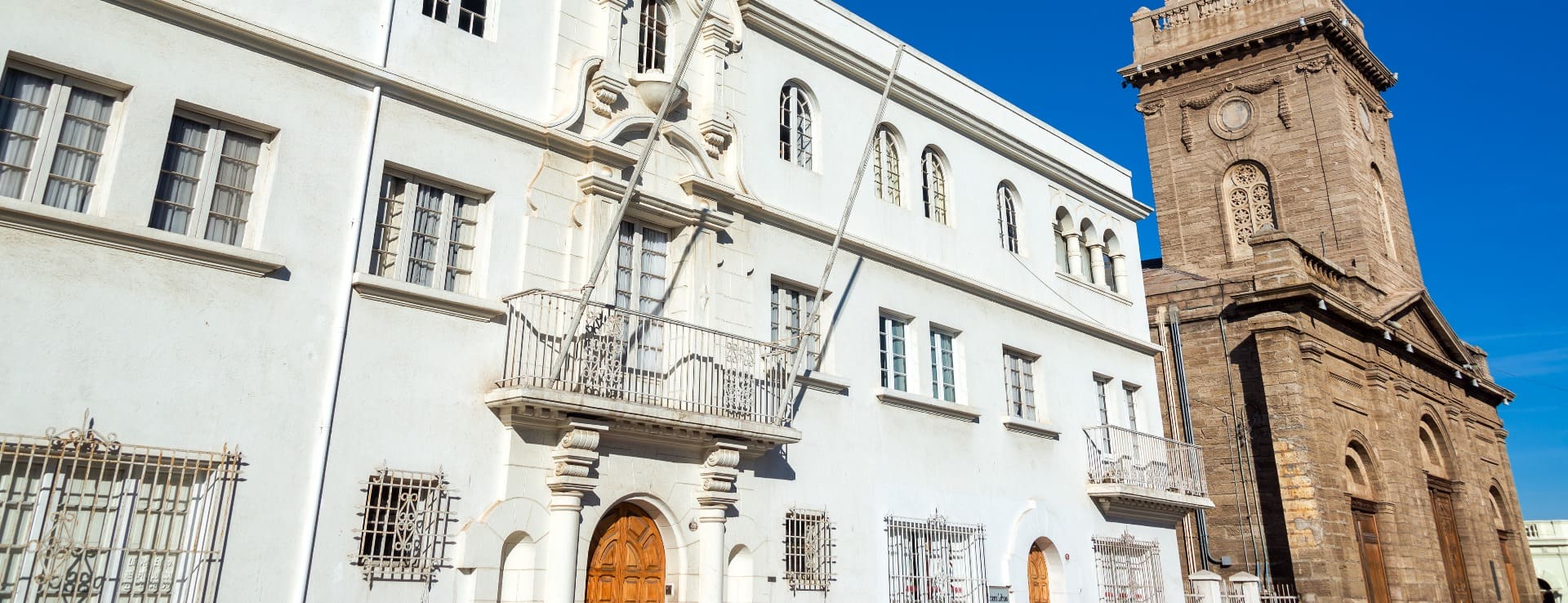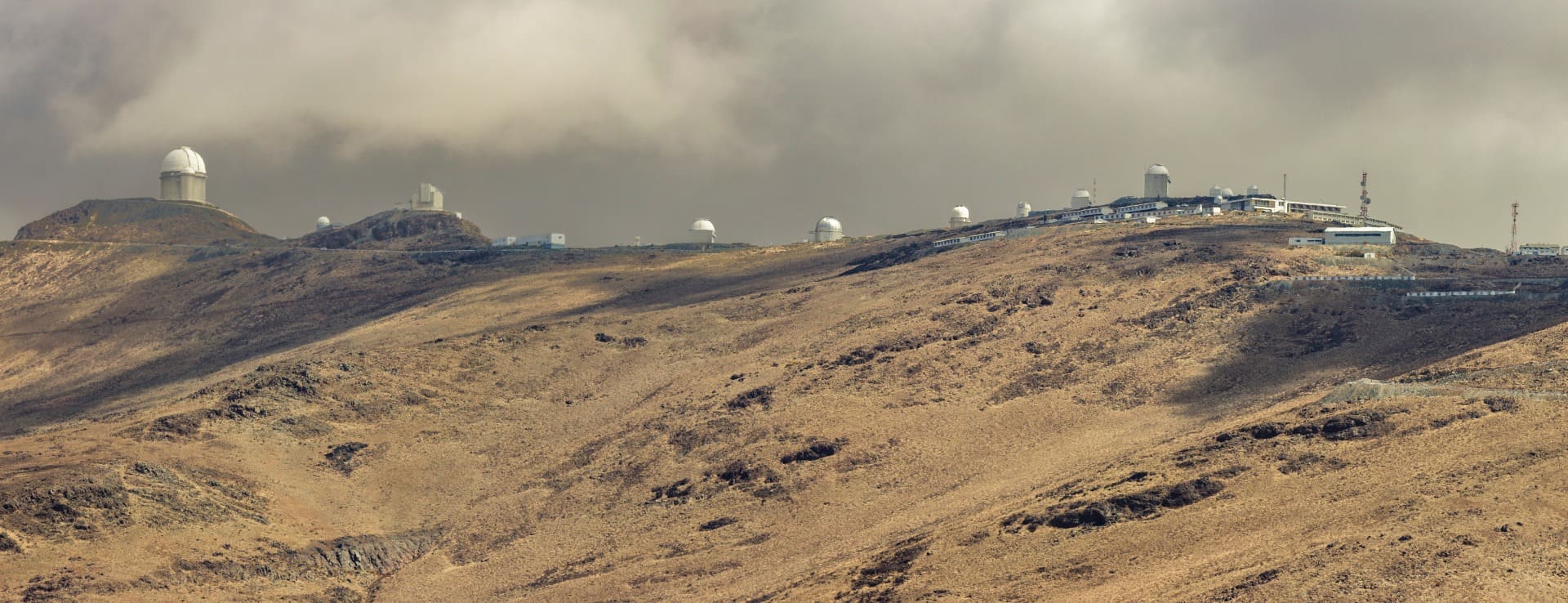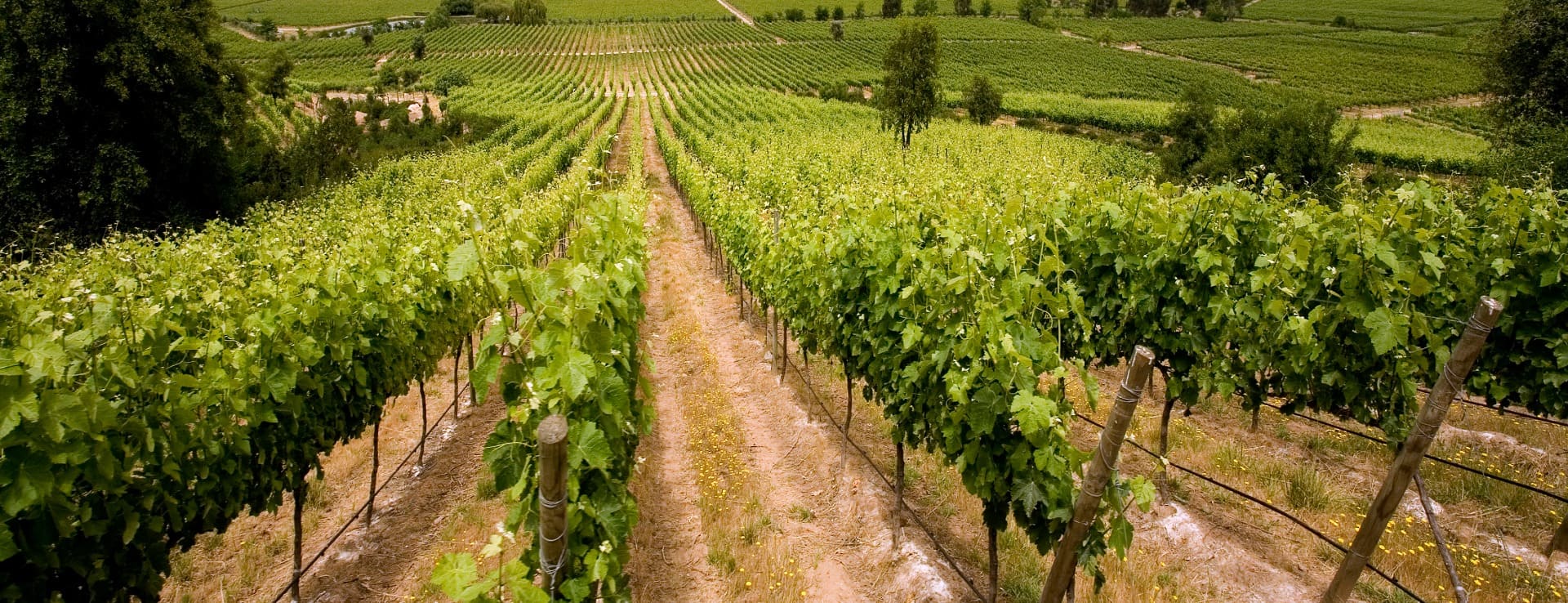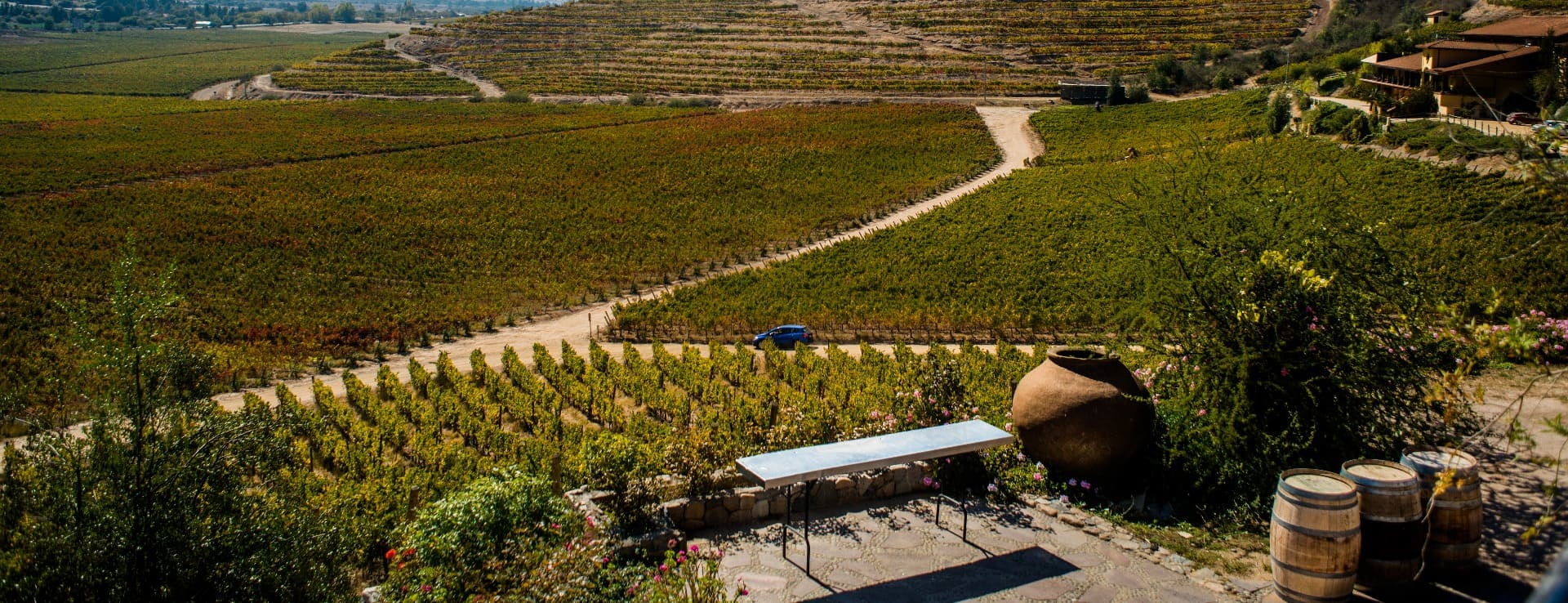Find your winery or vineyard
Infographic of the Region
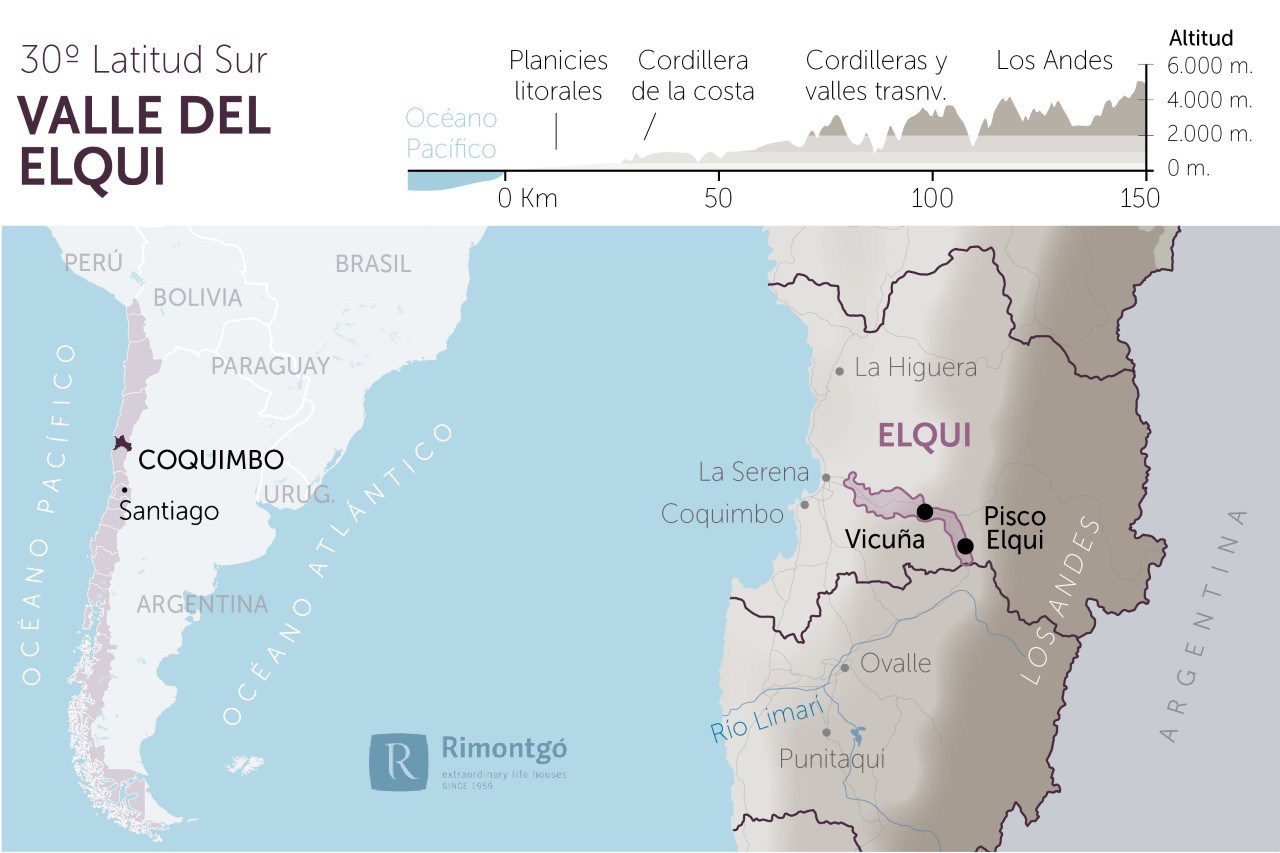
The export and cultivation of grapes in Coquimbo
The Chilean region of Coquimbo is located in the north of this country, bordering with the regions of Atacama and Valparaíso in the north and south respectively, with the Pacific Ocean on its west side and the Republic of Argentina on its east side. Most of its inhabitants live in the capital, the suburbs La Serena-Coquimbo with a population of 450,000 inhabitants.
After the new administrative division which dates back to 1974, there are three provinces in Coquimbo: Elqui, Limarí and Choapa which coincide with the designation of origin presents in this Chilean region.
The Coquimbo region has three important orographic features. Firstly, the Andes, with the mountain range that can exceed the 6,000 metres of altitude. Second, the Central Valley made up by the valleys of Elqui, Limarí and Choapa – known as the “Transverse Valleys”- and, finally, a large area of mountain range close to the Pacific coast, with an area of coastal plains at the back.
As it happens in the neighbouring Atacama region, the economy of Coquimbo is based on two major traditional activities, mining and agriculture. Throughout the region of Coquimbo, there are deposits of minerals and metals such as lead, iron, gold and silver, as well as non-metallic minerals as is the case of gypsum, quartz, lapis lazuli and onyx. Agriculture is present in the three valleys of the region, combining the horticultural and fruit activities with the vines aimed mostly used to the export production and; on the other hand, to the production of pisco, the national Chilean liquor. A third branch of the region’s economy in Coquimbo is the fishing industry thanks to the 400 km of coast, bordering with the Pacific Ocean. Fishing is mainly focused on the capture of seafood, sardine and pompano.
Traditional points of interest such as the Guanaqueros and Tongoy wellness centres have been promoted, in addition to the development of new facilities such as the wellness center Las Tacas. Thanks to the brightness of the sky in the Coquimbo region, it makes possible the presence of several observatories which has simultaneously drawn the attention of astronomy enthusiasts who come both from Chile and foreigners.
With regards to the wine production, the region of Coquimbo has about 19,800 ha of vineyards; of which those aimed to the production of table grapes (export activity) are about 44% of the total surface (8,720ha). The remaining 56% of the vineyard area (11,150 ha) is aimed to the production of wine, must and pisco. The pisco is one of the Chilean national products and for this reason; its consumption is high among the inhabitants of this country.
Discover more wineries and vineyards for sale in these wine regions in Chile
Subscribe to our mailing list to receive news about wineries and vineyards.

